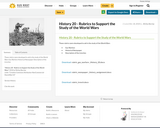
These rubrics were developed to aid in the study of the World Wars
Gas Warfare
Historical Newspaper
Description of the trenches
- Subject:
- History
- Social Studies
- Material Type:
- Assessment
- Date Added:
- 10/18/2018

These rubrics were developed to aid in the study of the World Wars
Gas Warfare
Historical Newspaper
Description of the trenches
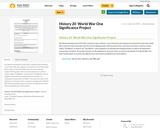
During the development of this Unit I wanted to give students a say in how they were
going to be assessed or how they would like to show me their learning in the form of
an ongoing project. We focused on the curriculum outcomes as well as criteria called
“The Big Six” in History 20. “The Big Six” criteria helped us to develop the leading
question as well as all subsequent project items to follow.
The project focuses on the significance of events, items, or persons during the First
World War and their lasting impact on society. Our Big Six focus was Historical
Significance and Evidence.
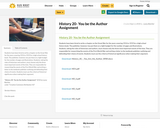
Students have been hired to write a chapter on the Great War for the years covering 1914 to 1919 for a high school history book. The publisher, however, has put them on a tight budget for the number of pages and illustrations. Students, taking the roles of historians and authors, must choose only the three most important events of the time. They are responsible for researching the events of the First World War and writing a letter to the textbook publisher outlining and defending their choice of events. Students must use the criteria of historical significance when making their argument.
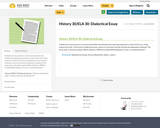
A dialectical essay presents a controversial problem and develops two opposing arguments or sides of the issue, citing evidence for both. At the end of a dialectical essay, a thesis or conclusion must be reached and adequately explained. This essay topic is: Should Canadian Military Battles in WWI be Credited With Helping to Create a "Canadian Identity"?

Meet Tom Longboat, an Onondaga long distance runner who becomes a world-class athlete. French subtitling included. Faites connaissance avec Tom Longboat, un ...

This package is the online accompaniment for our feature travelling education kit: History Box. In this package you’ll find digitized copies of each object found in the box, historical context, additional resources and activity suggestions. You do not need to borrow the kit to use this online resource.
This package contains objects and resources that are represented in the Canadian Museum of History’s signature exhibition, the Canadian History Hall. Collected from across the country, and highlighting varied perspectives, these objects illuminate the richness and diversity of the Canadian experience. They can be used as entry points to discussions on different periods in Canada’s history, or as lessons in historical inquiry that can build students’ critical thinking and historical inquiry skills.
To book a History Box, or for more information, please visit historymuseum.ca/learn/history-box.
The topics covered in this History Box include Early Canada, Colonial Canada, and Modern Canada.
There are two types of activities: Package Activities and Object Activities.
Package Activities are project-based activities designed to accommodate one or more classes. These activities involve the use of historical thinking concepts while exploring the whole package, resulting in a more comprehensive experience.
Object Activities are short inquiry-based activities that typically take 5–25 minutes. These activities encourage students to think critically about the objects being presented, and to use historical thinking concepts.
Both types of activities were created with the guidance of educators from across Canada, and incorporate current educational theory and approaches.
Is everything accessible?
We know that everyone accesses information differently, and have tried to ensure that package content addresses the varied needs of students and educators. Some of the many ways in which these packages support accessibility:
- Three levels of historical context to accommodate different ways of learning.
- A variety of media, including audio and video content, for diverse learning abilities.
- Multiple activity suggestions for diverse learning abilities.
- Content can be read with Assistive Technology applications.
- Downloadable and printable content that can be accessed offline.
- Transcripts for video, audio and hard-to read archival documents.
- Video subtitles in both official languages.
- Content is available in both official languages.
- Website complies with Website Content Accessibility 2.0 AA Guidelines.

Today we’ll cover the fourth and final of our core disciplines of engineering: chemical engineering. We’ll talk about its history and evolution going from soda ash competitions to oil refineries and renewable energies. We’ll also discuss some newer and emerging fields like biotechnology and pharmaceuticals.
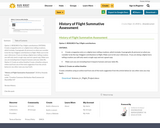
Option 1: RESEARCH Top 3 flight contributions
CRITERIA:
Create a magazine entry or a digital story telling creations, which includes 3 paragraphs (& pictures) on what you consider to be the top 3 biggest contributions to flight. Make sure to list your references. If you are doing a digital story telling creation you will only need a rough copy and not a good copy.
Make sure you are including how it impacts humans and your daily life.
Option 2: Create an online timeline
Create a timeline using an online tool from one of the tools suggestion from the article below (or any other ones you may find!):
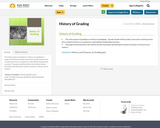
The main purpose of grading is to inform our pedagogy. A grade should tell the student, the teacher and the parents how a student performs in comparison a well-defined standardized outcome.
The grade should help direct the students further learning by identifying the student’s position on the journey to mastery.

This production is a stop animation video that depicts the history of land settlement in western Canada in the 1800s. The entire video was written and produced by my grade 3/4 students at Lucky Lake School. We studied the history, then they created the storyboard and wrote the script. All of the scenes were flimed with iPads on three different sets with students in the shop. I did the editing and added the sound and their prerecorded narration. All of the props where hand made from scratch or recycled materials. The entire project took one month to complete.
This is an excellent example of Project Based Learning in action!

With a solid understanding of biology on the small scale under our belts, it's time for the long view - for the next twelve weeks, we'll be learning how the living things that we've studied interact with and influence each other and their environments. Life is powerful, and in order to understand how living systems work, you first have to understand how they originated, developed and diversified over the past 4.5 billion years of Earth's history. Hang on to your hats as Hank tells us the epic drama that is the history of life on Earth.

In order to understand the history of media literacy we have to go all the way back to straight up literacy. In the first half of our look at the history of media literacy, Jay takes us all the way back to Ancient Greece and forward through the printing press, newspapers, and Yellow Journalism.

Jay continues our journey through the history of media literacy with the arrival of movies, television, and the other screens that now permeate our lives – along with some of the different approaches to media literacy that these inventions brought with them.

The impact of treaty making in Canada has been wide-ranging and long standing. The treaties the Crown has signed with Aboriginal peoples since the 18th century have permitted the evolution of Canada as we know it. In fact, much of Canada's land mass is covered by treaties. This treaty-making process, which has evolved over more than 300 years between Aboriginal and non-Aboriginal people in Canada, has its origins in the early diplomatic relationship developed between European settlers and Aboriginal people. As the two parties made economic and military alliances, Canada began to take form. These diplomatic proceedings were the first steps in a long process that has led to today's comprehensive claims agreements between the Crown and Aboriginal groups.

This package has been generously provided by Zorbit's Math.
The ‘holiday slide’ in our students can be just as concerning as the dreaded ‘summer slide’. Zorbit’s offers students a fun way to keep their math skills up to snuff over the holidays and avoid this slide.

The Holodomor Research and Education Consortium provides opportunities to support teachers and students to learn more about the Ukrainian Holodomor of the 1930s. Information about teaching materials and resources, such as the recently-published resource, Holodomor in Ukraine, the Genocidal Famine 1932-1933 : Learning Materials for Teachers and Students can be found here.
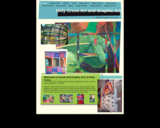
Lessons & exemplars for high school visual and graphic arts courses.
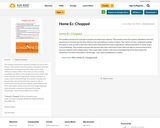
The students would work in groups to prepare an entrée and a dessert. They would receive five mystery ingredients that they would have to incorporate into their dishes on the spot without a recipe to follow. They had to use their cooking knowledge and skills to come up with a meal and a desert that showcased the mystery ingredients, without looking for or using recipes (critical thinking). They worked in groups and, because they were restricted in time, had to be able to communicate quickly and work together well (collaboration). They made videos similar to the ones at the beginning of the show where the competitors introduce themselves. (Technology - new cameras/cellphones to video).
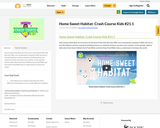
How would a Polar Bear do if you put it in the desert? Not well. But why? Why can't anything live anywhere? Well, this has to do with Habitats and how animals (including humans) are suited for living in one place over another. In this episode, Sabrina talks about how these Habitats form Food Webs and how those Food Webs help us understand a lot about the world.

Honouring the Buffalo: A Plains Cree Legend is a useful educational tool for social studies/treaty and language arts/literacy curriculum teaching. Included on the website is a resource guide, educational guide (questions), audio recordings, and curricular connections. There is a book trailer as well as an exerpt in English and in Cree.